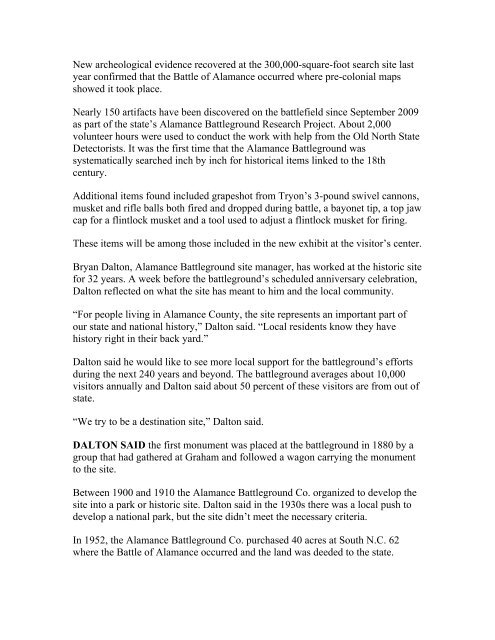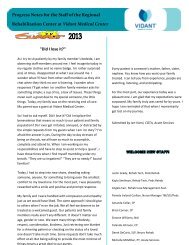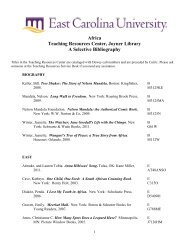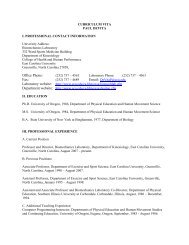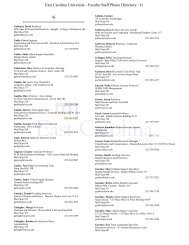DAILY CLIPS COVER - East Carolina University
DAILY CLIPS COVER - East Carolina University
DAILY CLIPS COVER - East Carolina University
Create successful ePaper yourself
Turn your PDF publications into a flip-book with our unique Google optimized e-Paper software.
New archeological evidence recovered at the 300,000-square-foot search site last<br />
year confirmed that the Battle of Alamance occurred where pre-colonial maps<br />
showed it took place.<br />
Nearly 150 artifacts have been discovered on the battlefield since September 2009<br />
as part of the state’s Alamance Battleground Research Project. About 2,000<br />
volunteer hours were used to conduct the work with help from the Old North State<br />
Detectorists. It was the first time that the Alamance Battleground was<br />
systematically searched inch by inch for historical items linked to the 18th<br />
century.<br />
Additional items found included grapeshot from Tryon’s 3-pound swivel cannons,<br />
musket and rifle balls both fired and dropped during battle, a bayonet tip, a top jaw<br />
cap for a flintlock musket and a tool used to adjust a flintlock musket for firing.<br />
These items will be among those included in the new exhibit at the visitor’s center.<br />
Bryan Dalton, Alamance Battleground site manager, has worked at the historic site<br />
for 32 years. A week before the battleground’s scheduled anniversary celebration,<br />
Dalton reflected on what the site has meant to him and the local community.<br />
“For people living in Alamance County, the site represents an important part of<br />
our state and national history,” Dalton said. “Local residents know they have<br />
history right in their back yard.”<br />
Dalton said he would like to see more local support for the battleground’s efforts<br />
during the next 240 years and beyond. The battleground averages about 10,000<br />
visitors annually and Dalton said about 50 percent of these visitors are from out of<br />
state.<br />
“We try to be a destination site,” Dalton said.<br />
DALTON SAID the first monument was placed at the battleground in 1880 by a<br />
group that had gathered at Graham and followed a wagon carrying the monument<br />
to the site.<br />
Between 1900 and 1910 the Alamance Battleground Co. organized to develop the<br />
site into a park or historic site. Dalton said in the 1930s there was a local push to<br />
develop a national park, but the site didn’t meet the necessary criteria.<br />
In 1952, the Alamance Battleground Co. purchased 40 acres at South N.C. 62<br />
where the Battle of Alamance occurred and the land was deeded to the state.


